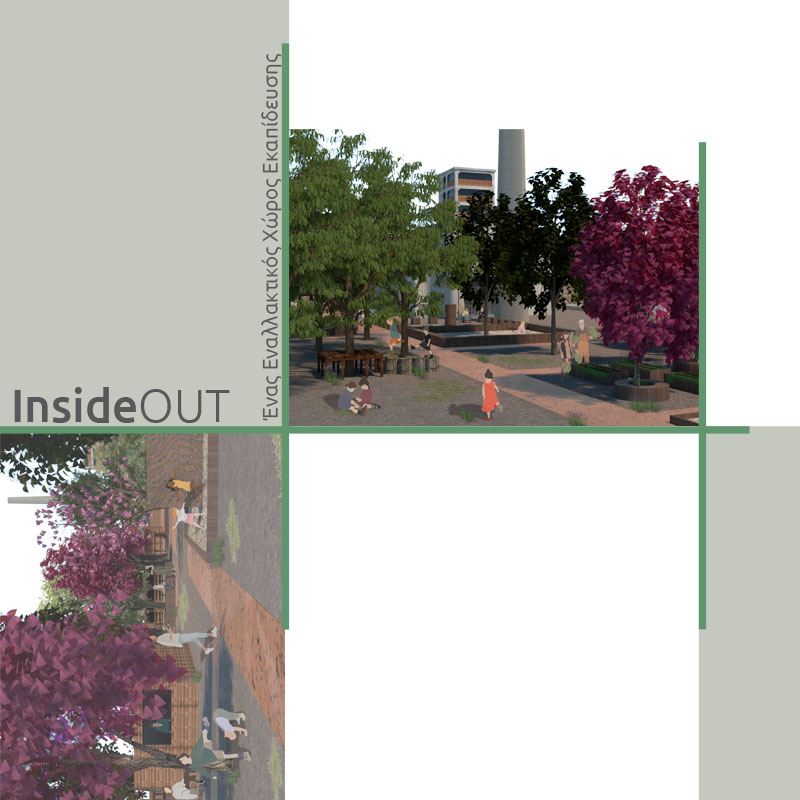

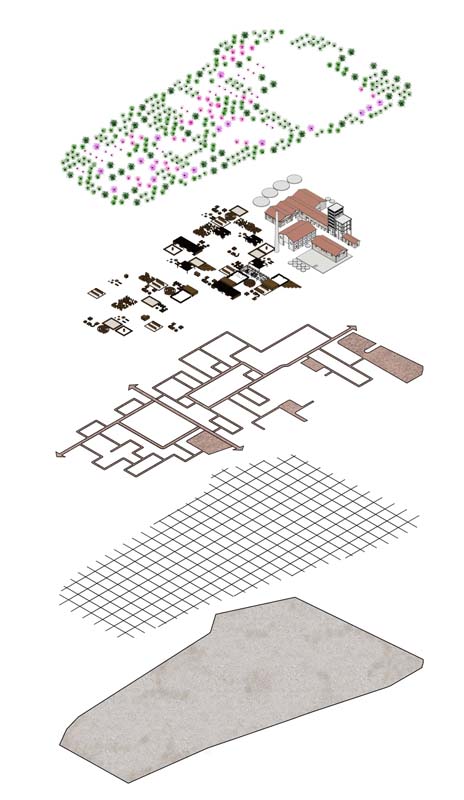

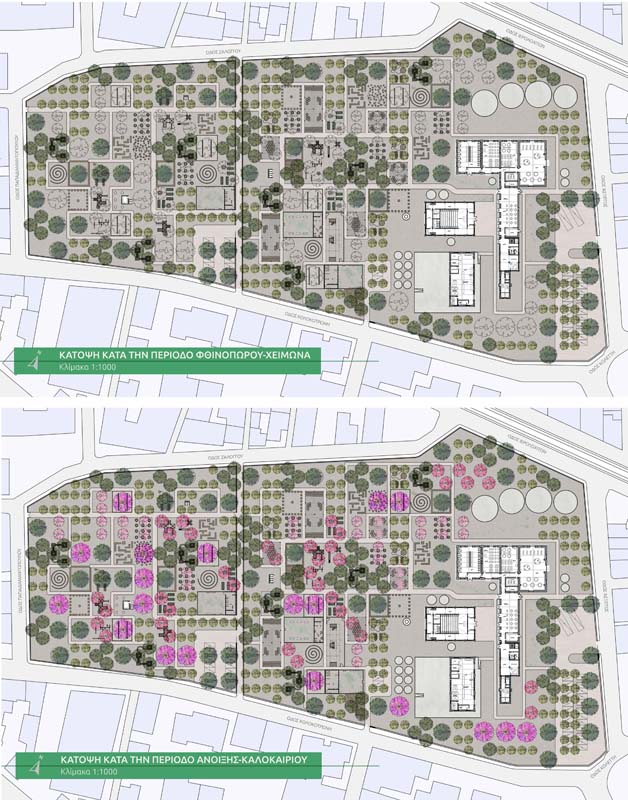

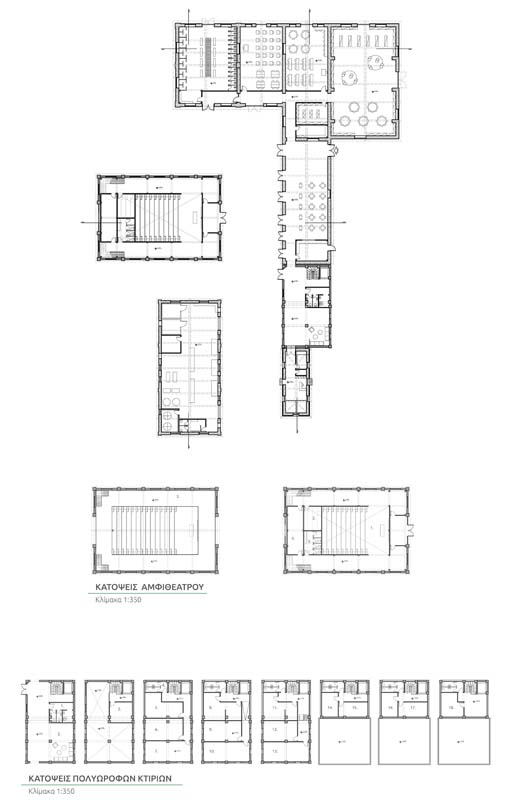

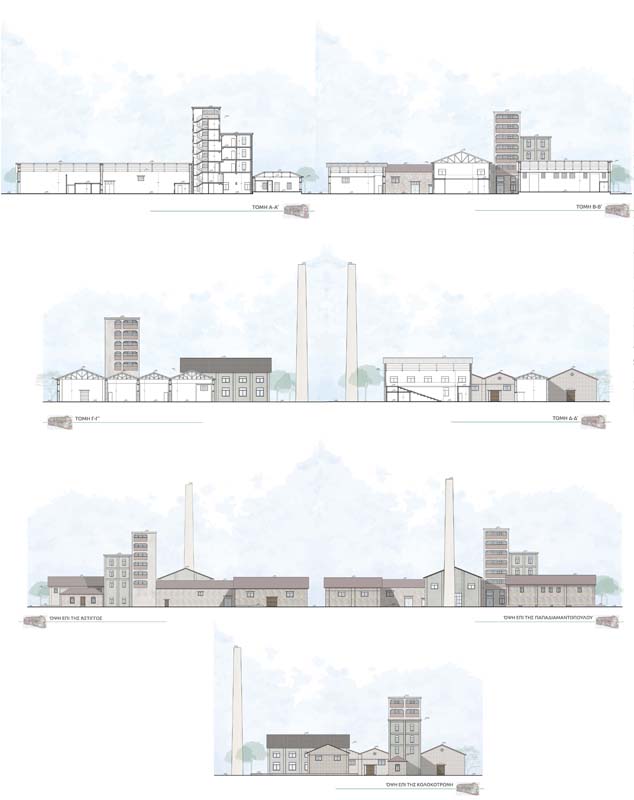



This thesis concerns the redevelopment and reuse of the alcohol factory, LTC, in Volos. In the larger part of the site an experimental, forest school, specifically a kindergarten, is proposed, and in the rest of the site a park accessible to all. The reason for this proposal was the Finnish education system, based on the theories of Célestin Freinet.
A key element of the proposal is the outdoor space, in which an attempt has been made to integrate the functions of a typical kindergarten. Activity areas were created, which can be used as places for teaching, playing, resting and caring for plants and animals. Thoughtful tree planting was carried out to provide colour, shade and a woodland feel. Natural materials have been used precisely to give the feeling of a natural landscape.
The space is aimed at a wide audience as it can be used by universities in the city, either for teaching or practice. Local or non-local schools will be able to visit and the dairy housed in one of the existing buildings will be used as a small annex to a local dairy factory.
Therefore, with the new use of the site, a piece of nature is integrated into the urban fabric. A green space is being constructed in order to bring life back to the area, it is being upgraded. With the redevelopment of the site, it is given uses that cover the area, both locally and in the whole city of Volos. Still, placing a forest school within the city, rather than on its periphery, shows how such a school can be successfully operated. Through play and the outdoors, children learn to love school and nature and to respect the environment. They learn to take care of themselves and other living organisms, to help with school operations, and thus develop a sense of respect for the work of teachers and staff.
Supervisor: Trova Vasso
Reference Number: 923
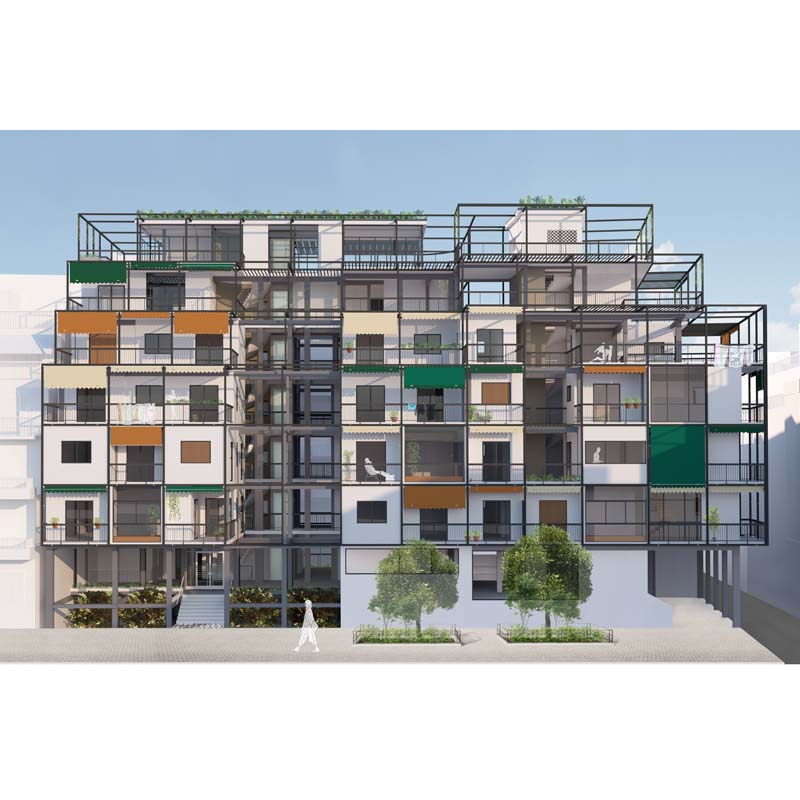

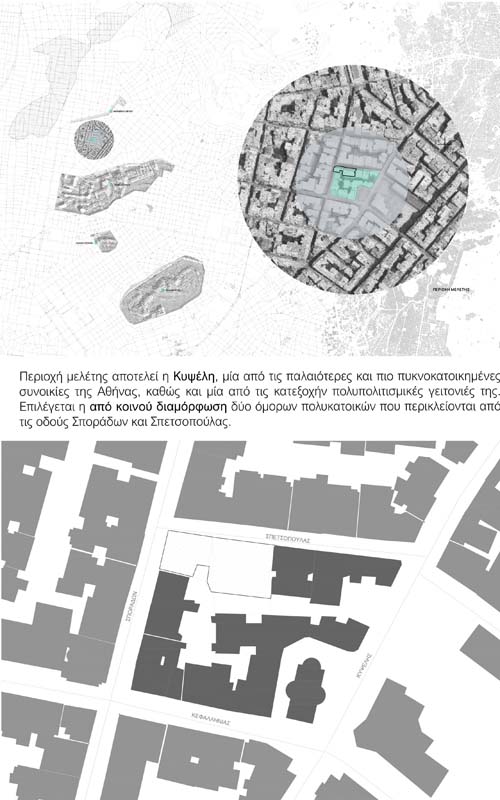

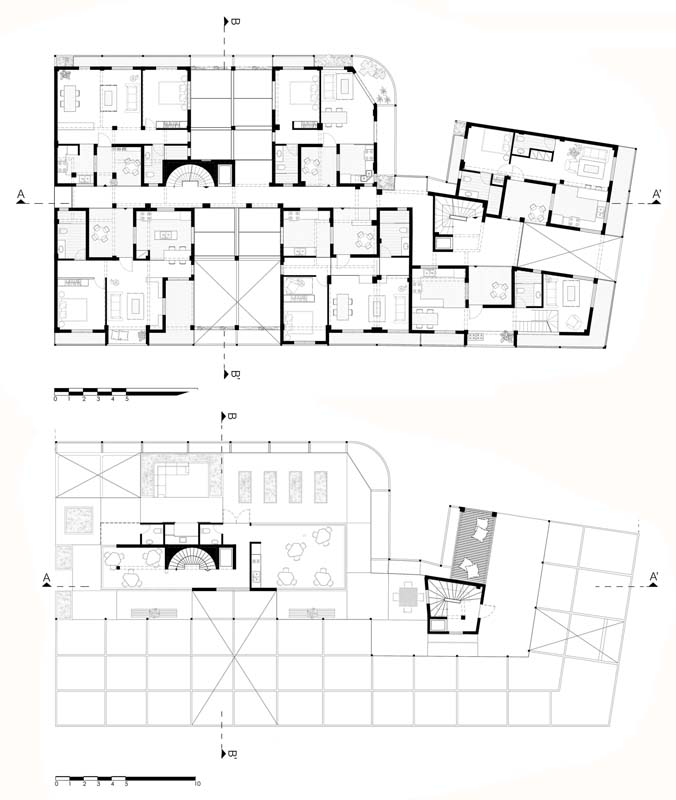

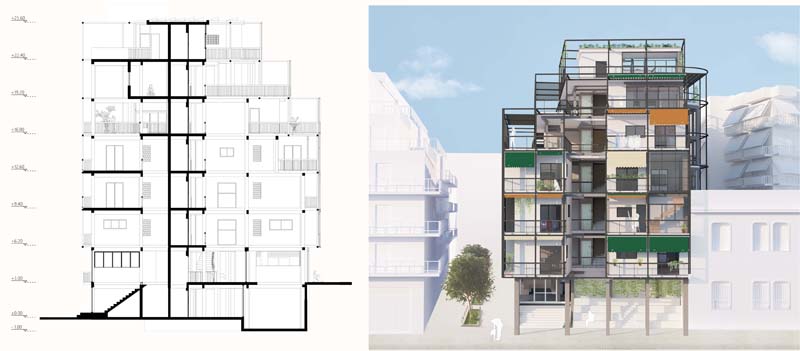

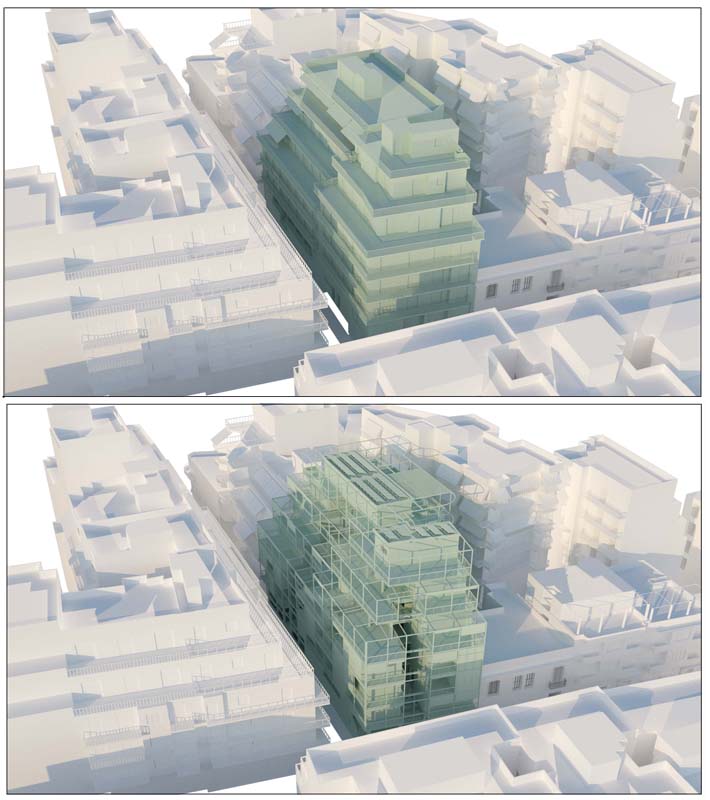

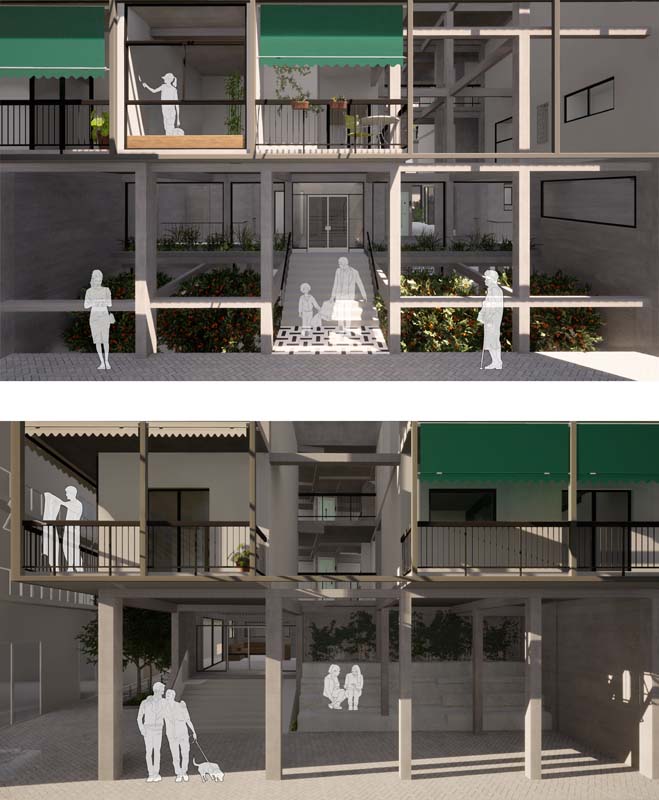

The city is a field of constant change. The economic data, the everyday practices and social conditions, are dynamically shaping urban environments, which are undergoing a continuous transformation process.
In this changing condition, one of the elements that seems to remain constant in the urban reality of Greek cities, is that of the ‘polykatoikia’ (a term referring to the greek apart- ment building). From its appearance to the present day, the model of the polykatoikia constitutes the basic core of habitation, which with small variations, repeats and composes the formation of the urban fabric.
The city of Athens is the main representative of this building model. It is often referred to as a cement town, a term that identifies an entire city with the materiality of its buildings. The subjects seem disappointed in a city accused of the excessive densification and spreading, the lack or abandonment of public open spaces, while ‘polykatoikia’ itself is re- ferred to as a problematic element, with a lack of functionality and aesthetics. And while the city is changing, at the rate indicated by the current era, ‘polykatoikia’ remains the same.
This diploma thesis aims to reformulate the elements that compose the athenian polykatoikia, attempting to replace this old and rigid model by a new residential model, which will produce new spatial qualities and atmospheres. Through the consolidation and remodeling of two typical buildings in the Kypseli area, a spatial ratio of vacuum and solid is being studied, which will allow the existence of open common spaces, will reinforce the contact with the outside and the meeting of the inhabitants, forming a more sustainable core of habitation, capable of adapting to the needs of its users. A porous structure, which gives basis to openness, alternation, connections and interpenetration, while main- taining the diversity of the city.
Supervisor: Mitroulias Giorgos
Reference Number: 936


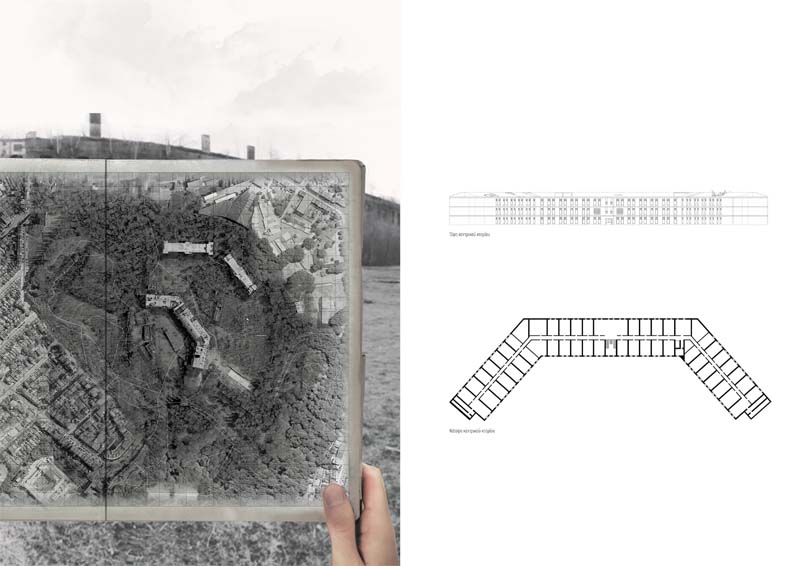

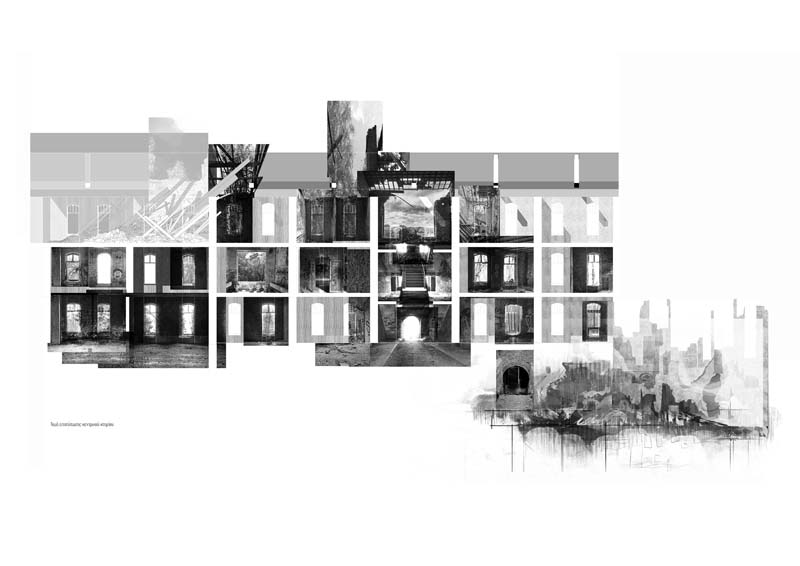

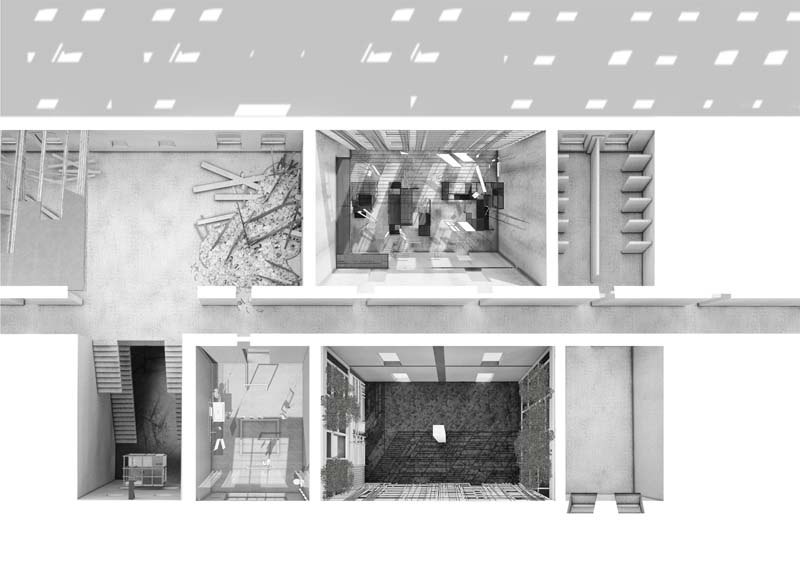

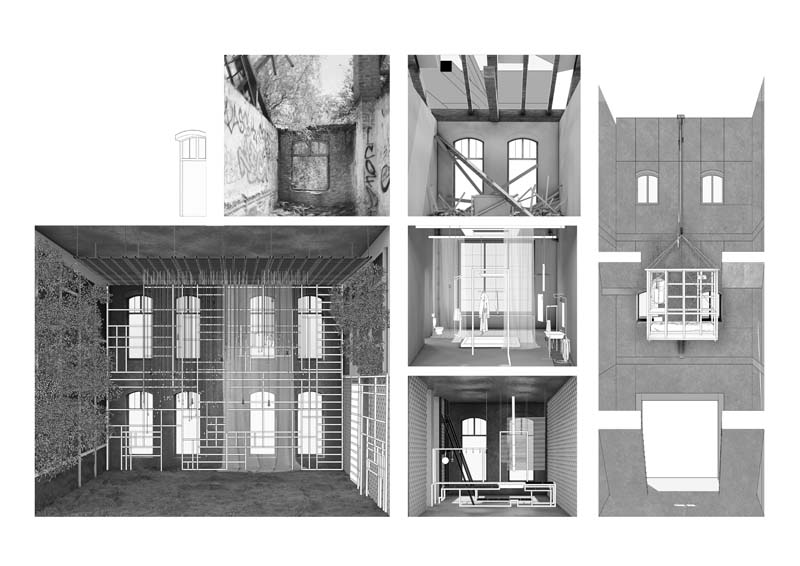



This thesis is a personal experiment, a study in the process of remembering and the spatial imprint of memories that may arise during the design process. The above research translates into the creation of hybrid spaces and structures, which have their roots in the personal past. The atmospheric, memorial constructions are integrated in a decomposing building shell, which delimits and restores the imaginary spaces to the present, creating a symbiotic relationship. The fragmentary and idiosyncratic nature of memory is explored, the relations of bodily memories with the uncanny space through memorial constructions and functions. This alternative and paradoxical form of residence is an intermediate space, between the present and the past, imaginary and real.
Supervisor: Psychoulis Alexandros
Reference Number: 934
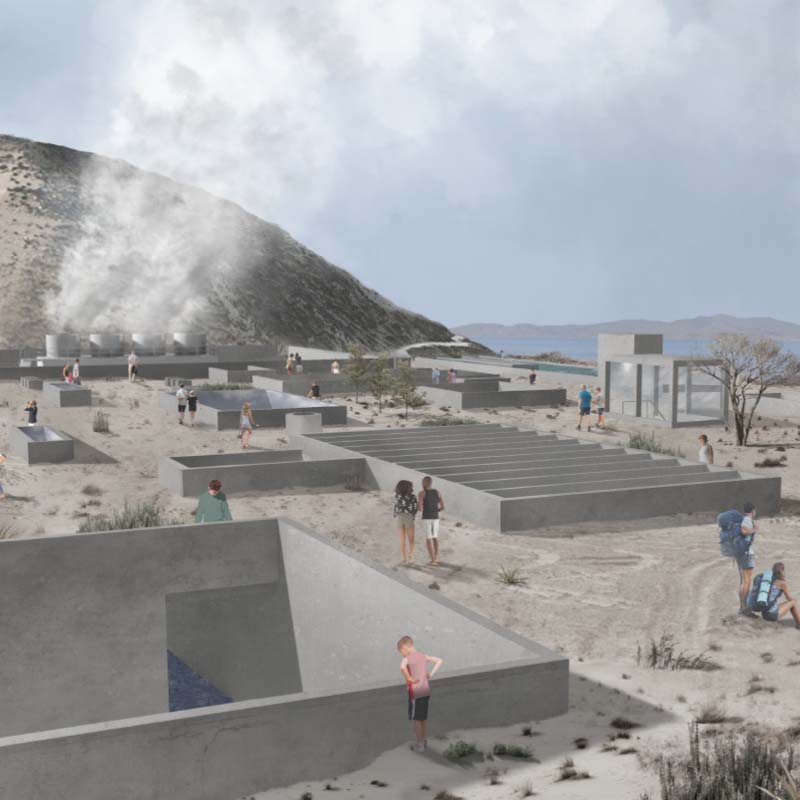

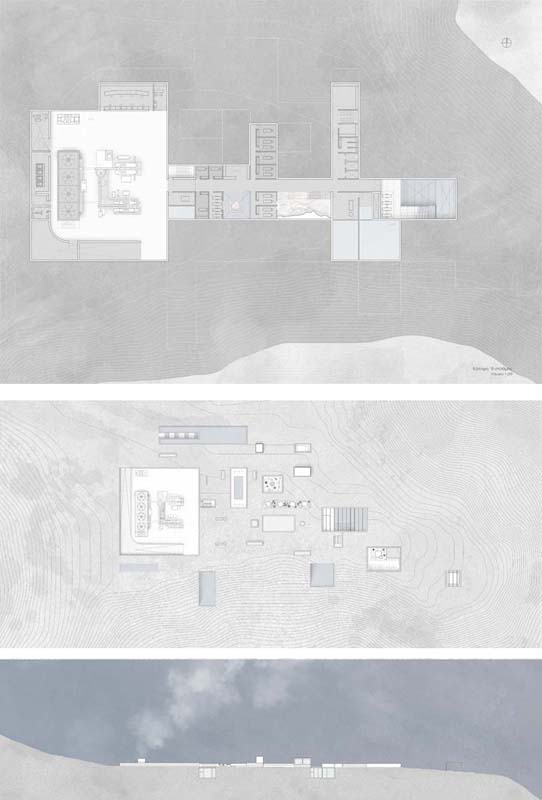



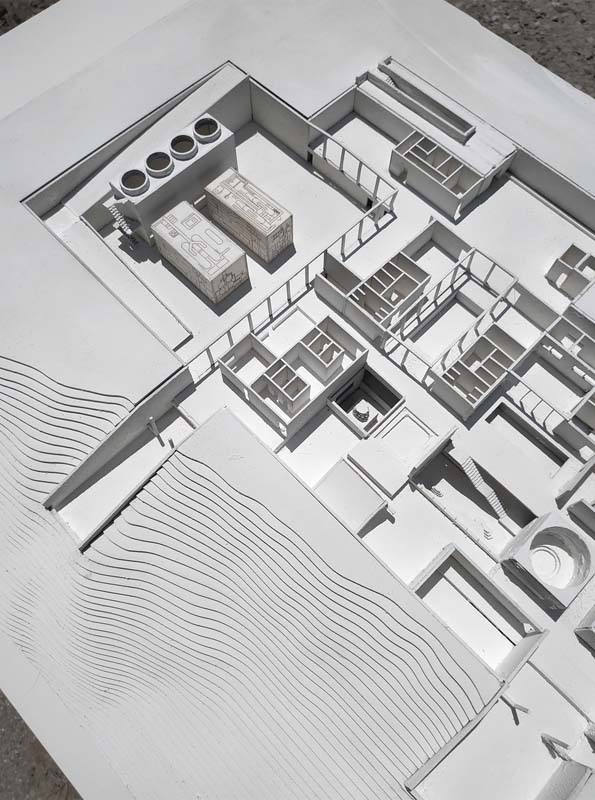

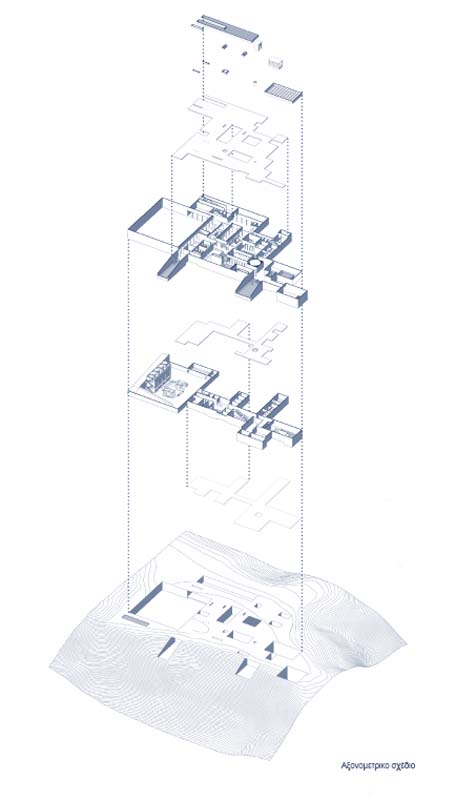

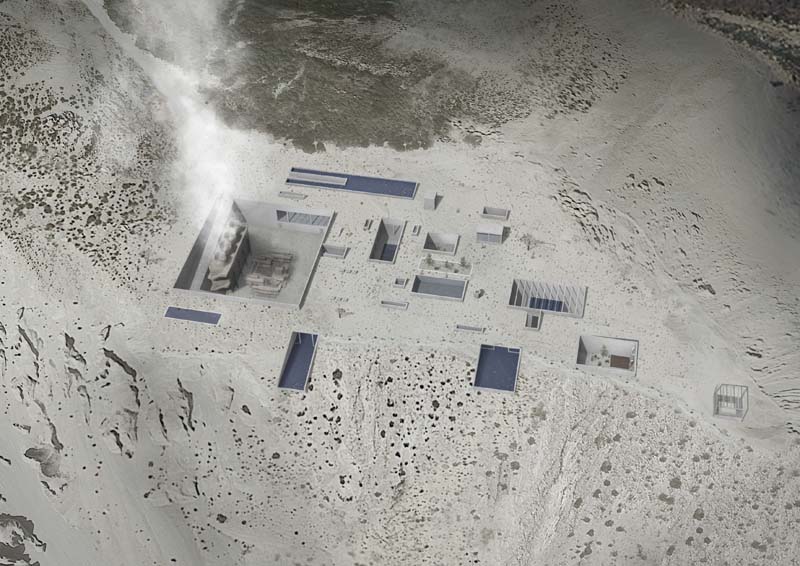

The observation and investigation of landscapes that have been drastically transformed by anthropogenic factors were the triggering points of the present diploma thesis. The research focuses on the volcanic island called "Giali", which administratively belongs to Nisyros. There are two mining companies operating in Giali that mine its rocks. Focusing on its southwestern part, the contrast ofthewhite -manufactured- with the natural landscape seems like a living canvas that demonstrates man’s imposition on nature. Given the presence of the companies, the main concern was the way in which different programs can be introduced on the island, to keep it active even after the completion of the mining works. It was therefore considered appropriate to find a new scenario and it is proposed to utilize the geothermal energy of the island, through an architectural program, where energy production and the bathing element have the leading roles. The geothermal station of Giali is a heat hub that generates energy for the neighboring island of Nisyros, covering its electricity needs, while the discharged energy is consumed directly on Giali. This productive program coexists with bathing facilities, as different cultures use geothermal springs as places to meet up, be cleaned and relax. The proposal explores the experience of meeting the industrial character of the power plant, with the stimulating aura exuded by the baths, so the programs were not divided into different parts of the island, but they were placed at the left end of the open mine pit, at the intersection between natural and manufactured landscape. The proposal is compatible with the "spirit of the place" that acrobatizes between the dipoles natural-artificial, empty-complete, memory-oblivion, human scale-monumentality, highlighting its special atmosphere and stimulating the visitors’ interest.
Supervisor: Gavrilou Evelyn
Reference Number: 937
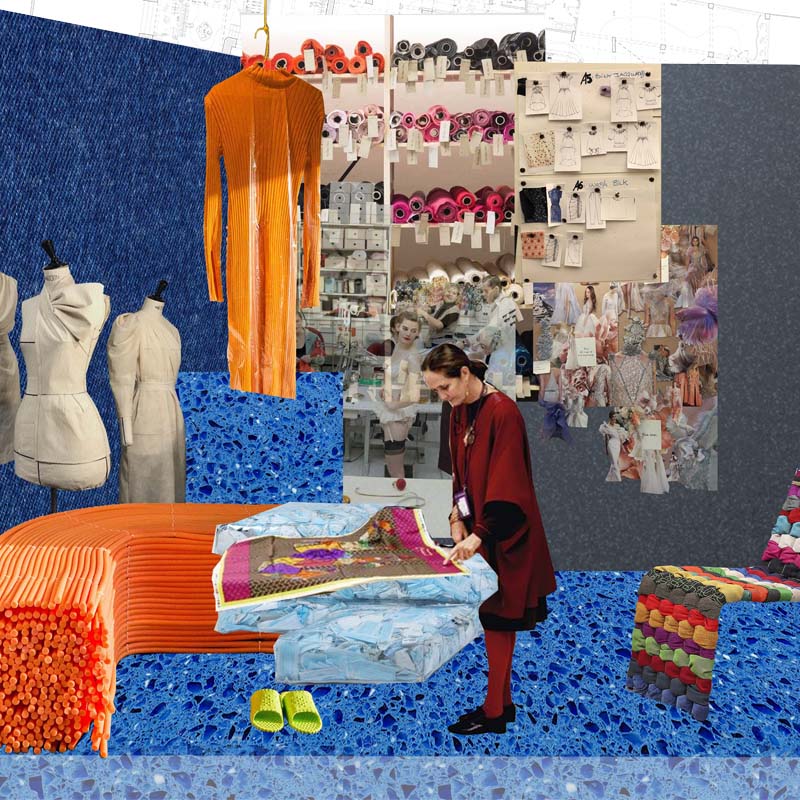





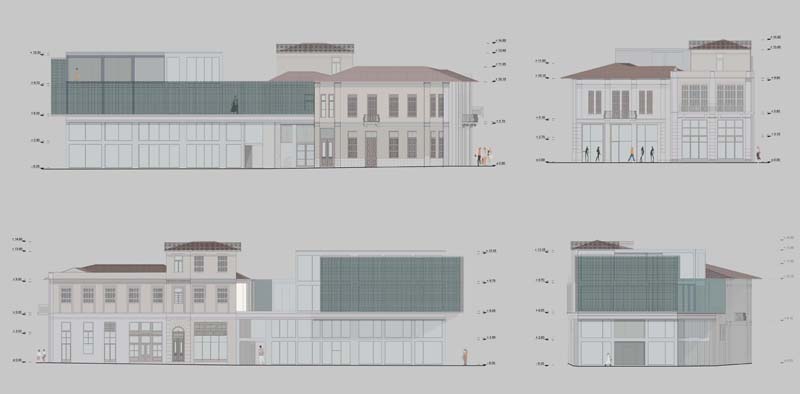

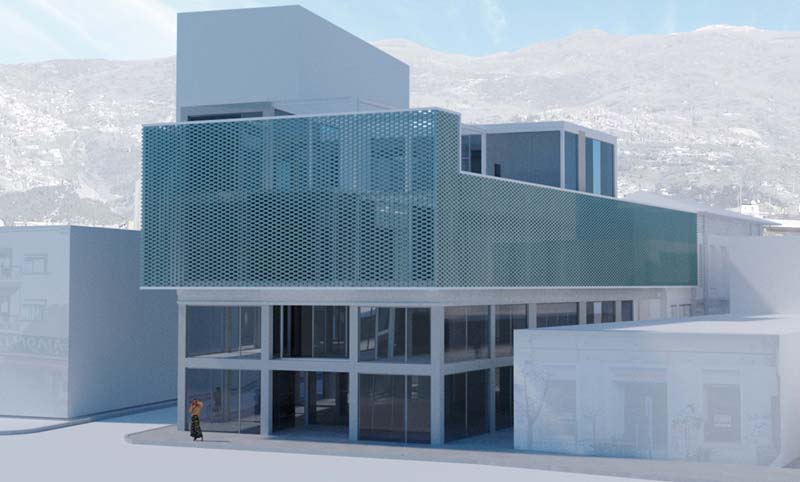

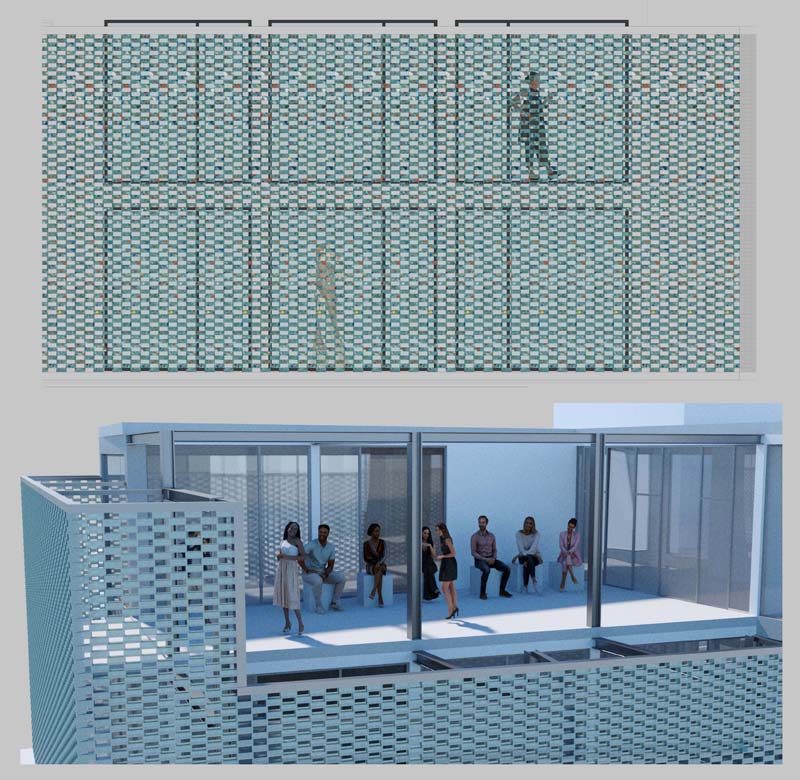

The term Fast Fashion, has been established by companies that promote and sell clothes at very low prices. The reduced quality of clothes, the increase of purchases and the speed of their replacement, create a large amount of leftovers that are difficult to be recycled and reused.
This architectural thesis is divided into three sections: narrative, functional organization and architectural design. It starts with an analysis of the term Fast Fashion through a theoretical framework and examples of contemporary recycling technologies.
This is followed by a research and documentation of the buildings where the intervention is proposed. The search is done by observing buildings in the center of Volos, a city with an important industrial history in the textile sector. Two buildings that piqued my interest are the abandoned buildings on Dimitriados and Rozou streets, two buildings that although they have a history of centuries, they have been erased and forgotten over time, as their condition. Through narratives of the owners, the residents of Volos, personal search and imprinting, a complete documentation of the history and drawings of these two buildings is achieved. The intervention continues throughout the entire city block in order to present new functions, preserving the existing ones, as well as to emphasize new recyclable materials in terms of architectural approach and construction.
Through necessary searches and infographics, the building program is created, which can approach the interested public of the city of Volos, and more. The aim is to showcase new works and highlight new techniques that turn the growing waste or unnecessary products into a kind of sustainable commodity, i.e. how waste clothing becomes a resource for garment production, thus reducing the impact of textile waste. In this way, a new business model of investment is approached that combines fair trade with social benefit. Finally, the modernization of older functions of the block is also a key objective.
Supervisor: Vyzoviti Sophia
Reference Number: 924
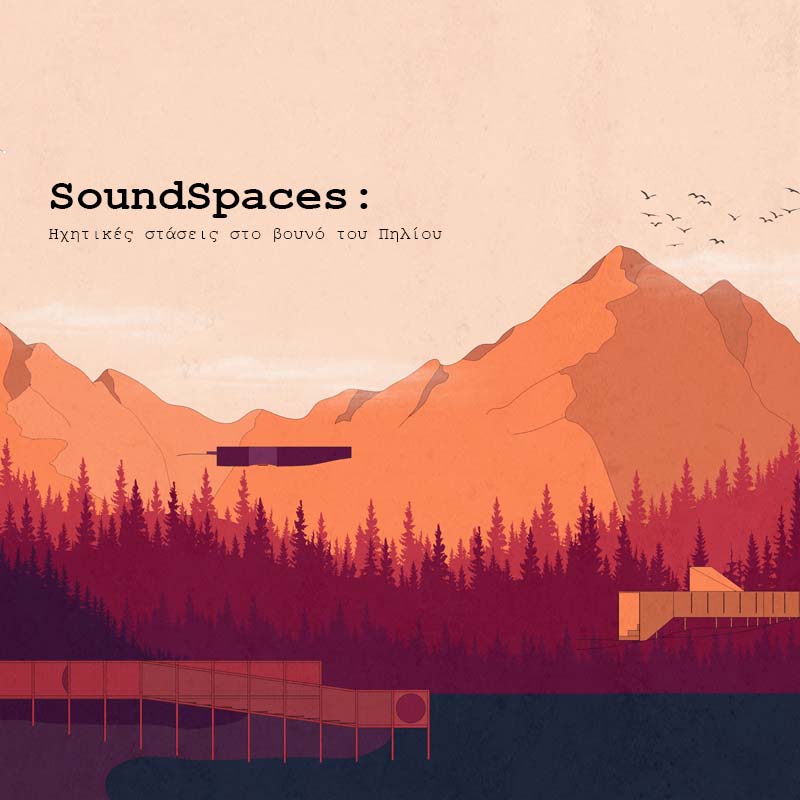

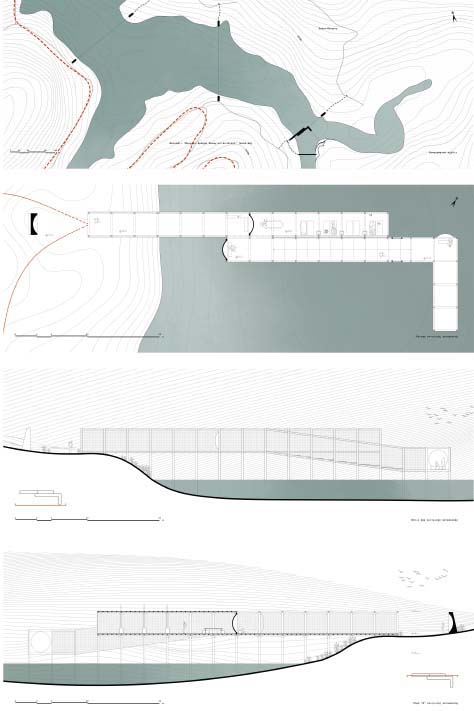

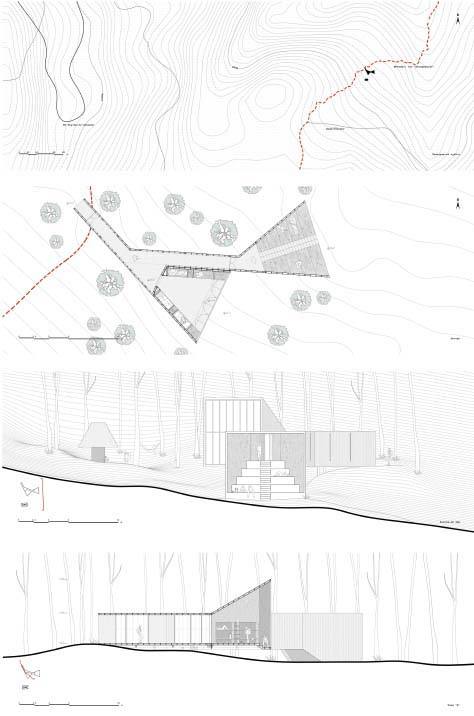

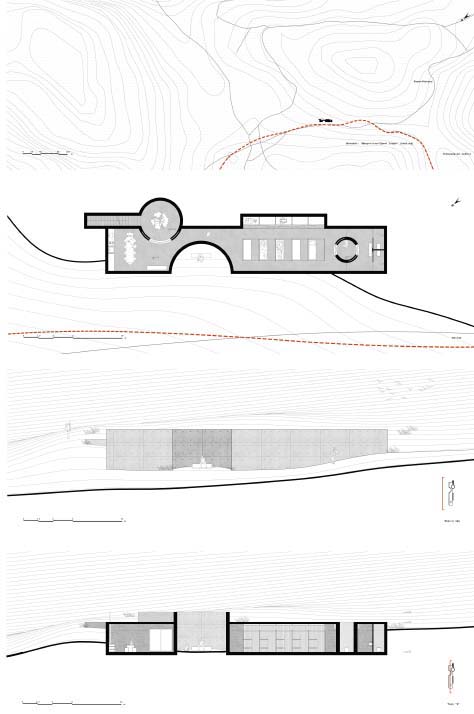

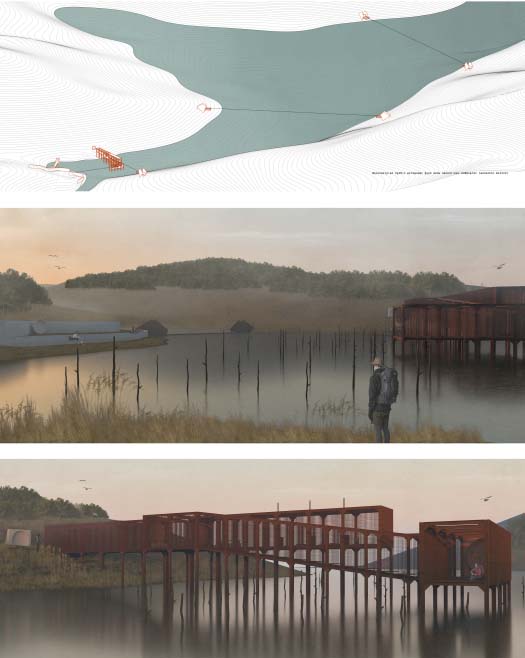

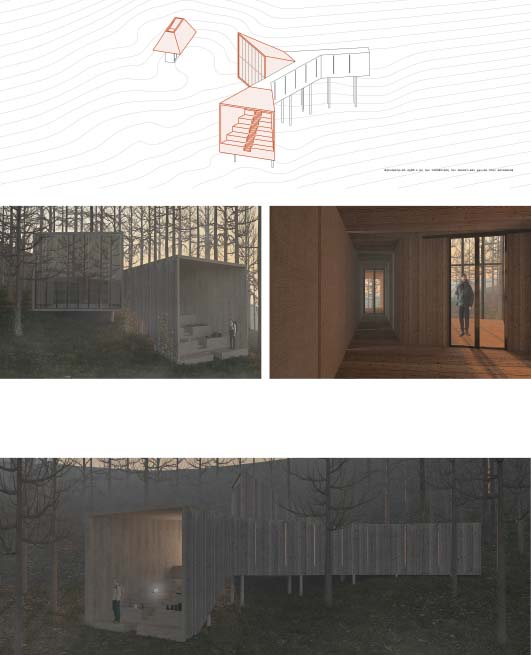

The subject of our diplomacy is a proposal for a complex of "sound" shelters in Pelion. The shelters have been placed in spots on paths that already exist, so that access to them is possible for a hiker, thus creating a new route. An important condition that has been taken, is the perception of the current soundspace in each area. Three points have been selected in Pelion where the intervention will take place, and each of these shelters adapts to the different conditions of the existing nature, the altitude, the accessibility of each point, but also to the soundspace of the area. The first point is located at the ‘’Panagiotiko’’ dam which is located at a low altitude, is easily accessible and its characteristic element is the water. The second point is located near Chania, and is a point in the heart of the forest. The last point of intervention is ‘’Trano Isoma’’. This is located at the highest altitude compared to the other two, is the most inaccessible and is characterized by low surrounding nature. Our final proposal consists of a combination of an architecture that serves the needs of a hiker, and an architecture that serves various sound and acoustic purposes. The purpose of our diplomacy, through this coupling, is to create spaces equipped with the essentials to accommodate a hiker, as well as to slow down the visitor within these spaces or around them. With the second one, we create the choice to the walker to stop, to sit, to focus on what he hears happening around him, as well as on what he sees. Through sound tricks that we have harmonized in our architecture, we expand the boundaries of our interventions, creating spaces without any material substance.
Supervisors: Mitroulias Giorgos, Remy Nicolas
Reference Number: 931
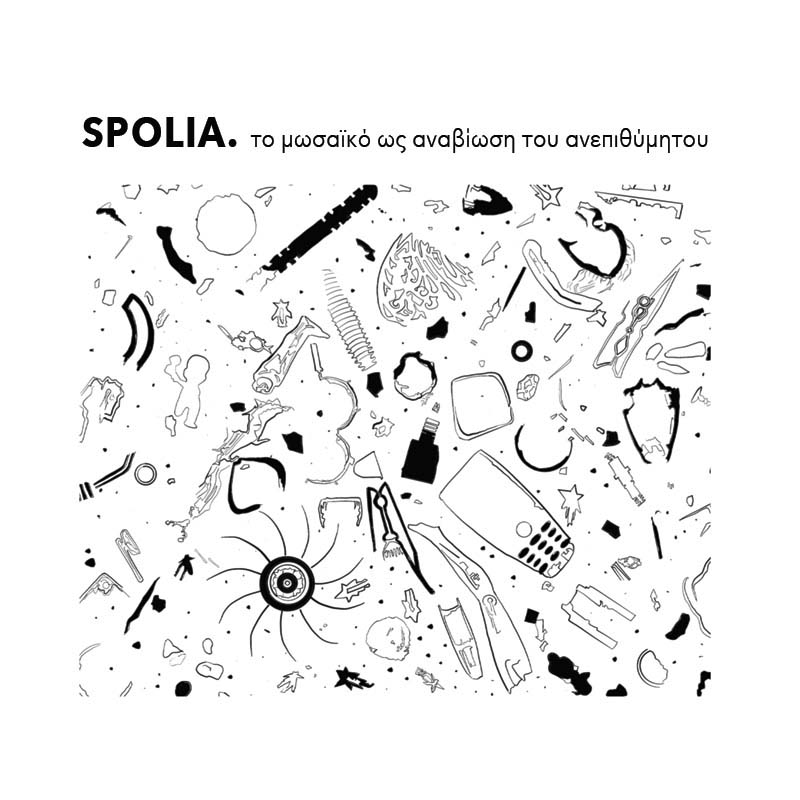

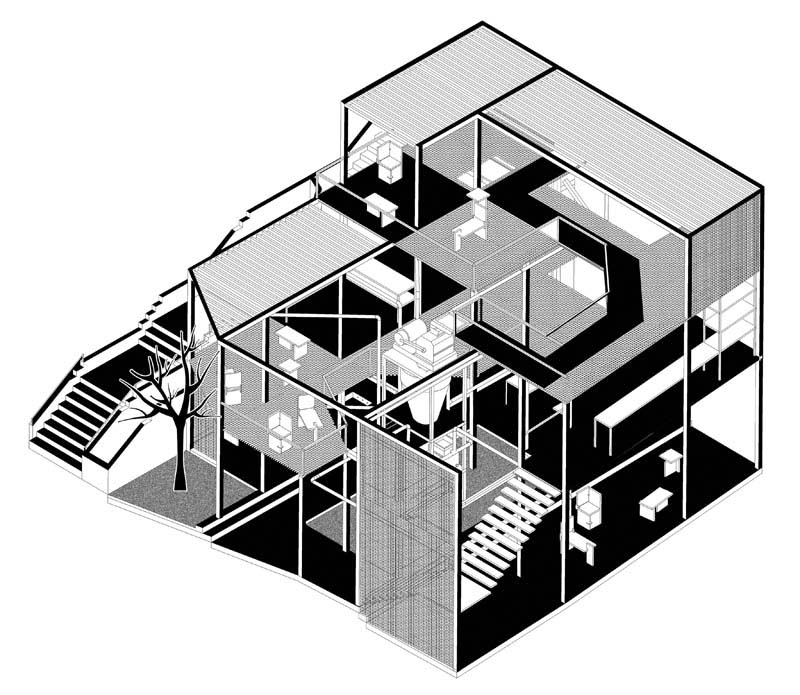



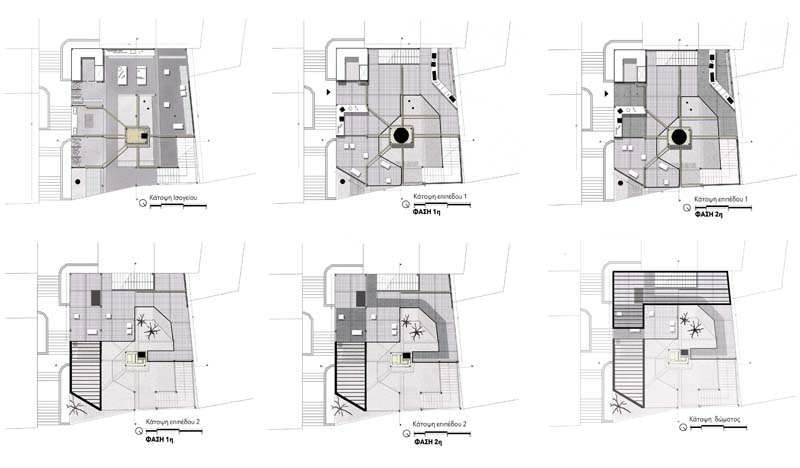



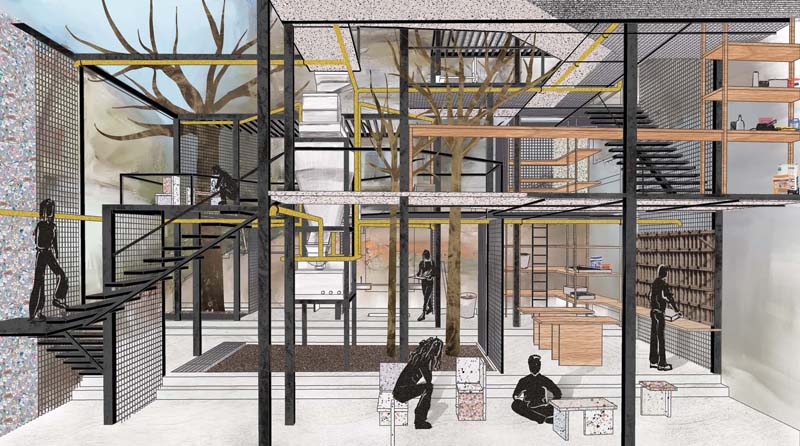

As residents of Pagrati, we observe that, in recent years, the area is changing-transforming from the inside out. Extensive renovations result in the production of a huge amount of architectural (and non-architectural) waste which is located throughout the area.
Incorporating the concept of the crab collector, we map, photograph and collect waste. After cleaning, sorting and crushing-segmentizingthem, we use/invent modern variations of the mosaic technique in order to create new surfaces/materials, thus giving new life to materials whose lifetime was considered finite.
Through experimentation, trials and errors on a 1:1 scale, new surfaces are finally born which we compose in an improvised construction/sculpture. The architectural fragments have now been turned into fossils, “spolia”, pieces of older generations integrated into a new structure.
We choose the plot between Yvikou and Zappa streets. It is officially owned by the municipality, but this is a controversial fact, since some families claim that it is their property. By studying/searching the boundaries of the private/public, the ways of appropriating a space, the importance of the neighborhood/community/participation both on a personal and collective level, we want to produce public space, involving users/craftsmen in the construction process.
We integrate the process of making improvised mosaics on a building scale. A sculpture mechanism consisting of a crusher, a concrete mixer, and a pump is the core of the structure. This mechanism feeds a system of pipes that encloses the entire construction, ending in selected vertical and horizontal surfaces. Waste is collected, cleaned, sorted and then, with the help of the user/craftsman/manufacturer, is placed inside the mechanism. There it is crushed, mixed with concrete and then channeled into the selected building surface.
In this way, a three-dimensional square, a labor palace, a perpetual construction site that is constantly evolving through participation, is gradually 'printed', emphasizing both the personal and the collective imprint. Work/Labor takes on new dimensions, and attempts are made to connect it with fun, socialization and the increase of collective consciousness.
There are two phases of construction. In the first, an all-metal structure consisting of pillars, grids and pipes, is placed on the plot having as its core the mosaic production mechanism. On the ground floor waste is collected, cleaned and sorted while molds are also made which are placed on the respective surface that the user wishes to ‘fill’.
On the first floor, smaller-scale mosaics are made-dried-grouted and assembled into improvised furniture-sculptures, which are then placed in selected areas of the square.
The waste is fed from the top of the mechanism, which is at floor level of the second floor. Then the appropriate nodes of the hydraulic system are opened in order for the concrete to reach the desired wall/floor. The user then fills the surface using the outlet of each tube.
In this way, all the defined vertical and horizontal surfaces are gradually 'printed'. In the second phase, the construction has built-in mosaics on its metal elements. The filling process ends, but the mechanism remains there, it turns temporarily into a fossil as well. At the same time, the smaller-scale process of producing mosaics/making furniture continues. The structure is now a three-dimensional square-workshop, a local forum-center of socialization through the practice of crafts, a public space made by the community for the community, now having the visible individual and collective imprint of users/builders.
Supervisor: Mitroulias Giorgos
Reference Number: 925




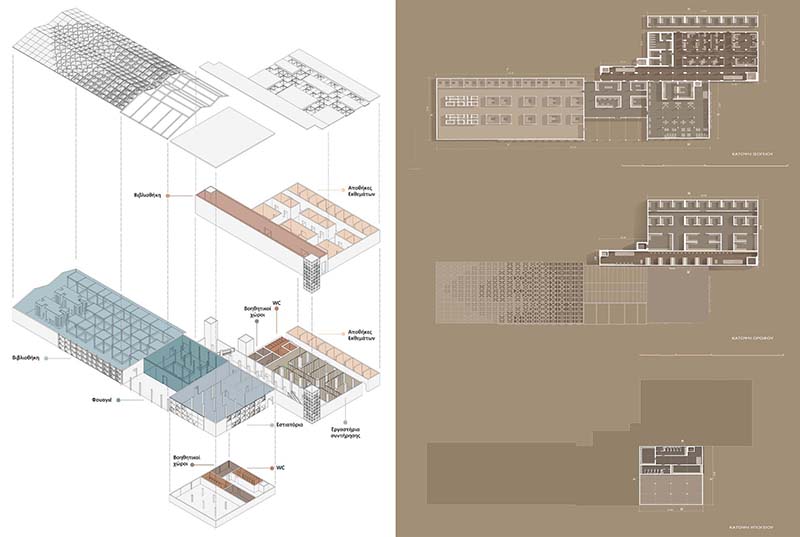







Nea Anchialos is a coastal town in the prefecture of Magnesia which was founded in 1907 by refugees from Palea Anchialos, then known as Eastern Rumelia. Since ancient times, in the region where it is located, there were commendable historical cities, namely Pyrasos and Thives of Fthiotis. The core of local history was the building complex of the first Agricultural Wine Cooperative. After 1972 the ownership of the complex was transferred to the Ministry of Culture and today it is partly used as an antiquities warehouse. Although the history of Nea Anchialos is significant, over time it has not been adequately showcased and as a result it is at risk of becoming obsolete. The purpose of this thesis is to examine the building complex, with the intention of its successful reuse. The thesis aims at transforming the old cooperative into a site suitable for the preservation and promotion of the cultural heritage of the region, as well as a "living" laboratory for the preservation, storage and display of material evidence from archaeological excavations in the area. In order for the site to adapt appropriately to this new and more challenging, building programme, the various parts of the existing building complex are either being radically remodelled or dismantled. In addition to storage facilities, the site will house a library, a small museum, laboratories for the study and conservation of exhibits along with a restaurant. The most striking contemporary element of the project is the addition of a perforated shell, anchored to the beams of the building's existing frame, which will be produced by 3D printing. The design of this structure was the result of detailed research into the application of 3D printing in architecture.
Supervisor: Psychogyios Dimitris
Reference Number: 969

